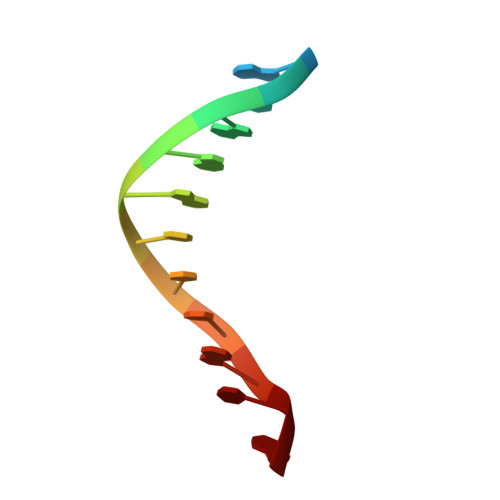Structure of d(CGCGAATTCGCG) in the presence of Ca(2+) ions.
Liu, J., Subirana, J.A.(1999) J Biological Chem 274: 24749-24752
- PubMed: 10455145
- DOI: https://doi.org/10.1074/jbc.274.35.24749
- Primary Citation of Related Structures:
463D - PubMed Abstract:
The dodecamer d(CGCGAATTCGCG) was the first oligonucleotide to be crystallized as a B-DNA duplex. Its structure was analyzed in detail in the early 1980s. Here we show that, in the presence of Ca(2+), it crystallizes in a different way (R3 space group). The dodecamers form parallel columns of straight duplexes with ten base pairs in the B form. The terminal cytosines in each molecule are disordered, whereas the terminal guanines are placed in the minor groove of neighbor duplexes. The central GAATTC region is practically identical to that found in the classic structure of the same dodecamer crystallized in the P2(1)2(1)2(1) space group in the presence of Mg(2+) and spermine. Its structure is thus independent of the crystallization conditions which have been used.
- Departament d'Enginyeria Química, Universitat Politècnica de Catalunya, Diagonal 647, E-08028, Barcelona, Spain.
Organizational Affiliation:

















